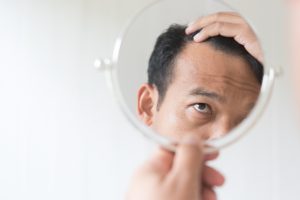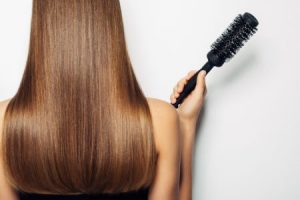Hair loss may be a common thing, but there is still a long list of myths surrounding it, most of which you can find online. By itself, hair loss is already a distressing problem that many are embarrassed to talk about, let alone seek treatment for it. Such hair loss misconceptions not only prevent people from seeking prompt treatment, but also push them to use products or techniques that are ineffective and may even do more harm than good to their hair and scalp.
Let us help separate fact from fiction. Here are the most common misconceptions about hair loss that you shouldn’t believe.

Image Source: rappler.com
Myth #1: Hair loss is only a man’s problem.
Given that the condition is found to affect more than 50% of men above 50 years old, it’s easy to see why many people might see hair loss as a man’s problem. But the reality is this: Women get it, too. In fact, it can be more distressing to women as hair is considered as a symbol of beauty and femininity.
Whereas male pattern baldness is characterized by a receding hairline, for women, hair loss comes in the form of thinning and falling hair, and is caused by a combination of age, genetics, hormones, medications, and hairstyles and hair products. Women can go to great lengths to hide their hair problems and find a hair loss cure, from changing hairstyles to trying various hair fall treatment options and home remedies for hair loss in the Philippines.

Image Source: pinoythreads.com
Myth #2: Wearing hats too much causes baldness.
Baldness has nothing to do with wearing hats, so you can go on and wear your favorite hats anytime and for as long as you want. On the other hand, wearing hats that are too tight can pull on the hair and disrupt blood flow to the scalp, causing hair fall. In this case, hair loss prevention is as simple as wearing good-fitting hats properly.
Myth #3: Direct exposure to sunlight is bad for your hair.
The sun’s UV rays can cause your hair to become dry and brittle, but there is no evidence that it is strong enough to damage hair follicles to cause hair loss. Still, you can easily avoid dry and brittle hair by applying hair sunscreen products as a form of hair fall treatment or possibly hair loss prevention for those who already have thinning hair and bald spots.
Myth #4: Too much testosterone causes hair loss.
Male pattern baldness is caused by genetics and hormones. It is often associated with a hormone known as dihydrotestosterone (DHT) that causes hair follicles to shrink, in turn causing a delay in hair regrowth and the production of thinner hair. However, the same level of DHT that contributes to hair loss can be found in both high and low testosterone levels. It has also been found that those with male pattern baldness have average DHT levels and low testosterone. Lifestyle changes and certain hair loss remedies may help with a hormonal imbalance leading to hair issues.
Myth #5: Frequent trimming or shaving makes hair grow back thicker.
This is one of the most common hair myths out there. Hair that has been trimmed or shaved does indeed look thicker, but this is only because the hair was not cut from the root, where hair is usually tapered. Trimming also eliminates split ends and reduces breakage, which makes hair appear thicker and even shinier.

Image Source: my-best.ph
Myth #6: Brushing hair 100 times a day will make your hair healthier.
Filipinos have several myths, and this is one of our most popular. Many believe that brushing hair 100 times a day, usually before bedtime, can make hair healthier. However, this is one of the most ineffective home remedies for hair loss. Brushing your hair too much can result in more breakage and hair fall.
Myth #7: Shampoo causes hair shedding.
It is wrong to believe that washing your hair with shampoo causes hair loss. Natural-based shampoos such as NOVUHAIR®, the leading hair loss treatment in the Philippines in 2019, can help prevent and cure hair loss. NOVUHAIR® is one of the top natural hair loss remedies in the Philippines containing a combination of 19 organic ingredients that reduce hair fall.












